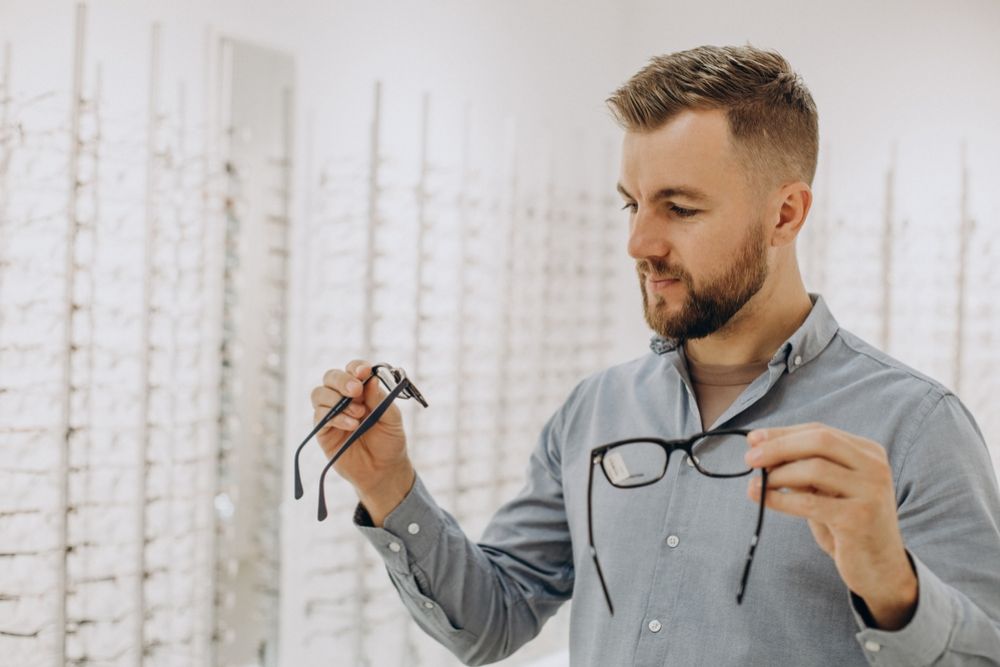Buying eyeglasses can feel overwhelming—especially once you realize how much the frames, lenses, coatings, and add-ons can cost. But just because you need good vision doesn’t mean you have to pay a premium price. There are plenty of smart strategies to help you save money while still getting a pair of glasses that fits your style, prescription, and budget.
Here are the most effective ways to save when purchasing eyeglasses—without compromising quality or comfort.
Get Your Prescription and Pupillary Distance First
Before shopping, make sure you have:
-
A current prescription from an eye doctor (within the last 1–2 years)
-
Your pupillary distance (PD) measurement
Many people skip the PD, which is the space between your pupils, but it’s crucial for lens alignment—especially when ordering online. Ask your optometrist to include it, or use an app or ruler at home. Having your prescription ready gives you more flexibility and prevents unnecessary exam costs.
Skip the In-Store Pressure—Shop Around First
Retail optical stores often pressure customers into buying right after their eye exam. Instead of rushing:
-
Take your prescription and compare prices elsewhere
-
Use the store visit to try on frame styles, then shop online
-
Ask for the exact model number of frames you like for price matching
You’re not obligated to buy from the same place you get your exam—so shop around with confidence.
Explore Online Retailers
Online eyewear shops offer some of the best savings. Many sell stylish, high-quality glasses at a fraction of retail prices.
Trusted options include:
-
Online-exclusive retailers with their own frame lines
-
Major brands offering virtual try-ons
-
Shops with generous return policies and warranties
Bonus: Many online stores now offer blue light filtering, anti-glare coatings, and scratch resistance as part of the base price—features that cost extra at brick-and-mortar stores.
Consider Buying Frames and Lenses Separately
Some optical shops charge high markups on frames and lenses when bundled together. You can often save by:
-
Purchasing affordable frames online or from discount stores
-
Taking those frames to a local optician to fit your prescription lenses
Some lens labs specialize in installing lenses into third-party frames—even sunglasses or designer options—saving you money and letting you customize your look.
Use Vision Insurance Wisely
If you have vision coverage, use it—but don’t assume it always offers the lowest price.
Smart strategies:
-
Ask for an itemized receipt so you can compare out-of-pocket vs. insurance cost
-
Check if your plan includes coverage for online purchases or reimbursements
-
Use coverage on the most expensive part (often lenses), and pay cash for frames elsewhere
Sometimes skipping insurance discounts on in-store frames lets you use your benefit on better lenses with real savings.
Don’t Overpay for Lens Coatings
Lens upgrades are important—but some are overpriced. Decide which coatings are essential:
Worth considering:
-
Anti-reflective coating: reduces glare, great for night driving and screens
-
Scratch resistance: ideal for daily wear, especially for kids
-
UV protection: often included in polycarbonate or high-index lenses
Optional (but often sold hard):
-
Blue light filter: helpful, but often included free online
-
Photochromic lenses: good for convenience but can be pricey
-
Premium anti-fog: useful for healthcare workers, not everyone needs it
Ask for a full breakdown and skip anything you don’t truly need.
Look for Frame Deals and Clearance Options
You don’t need to choose between stylish and affordable. Many brands offer:
-
Past-season frames at major discounts
-
2-for-1 deals or buy one, get one free
-
Referral discounts or first-time shopper codes online
Retailers rotate inventory often, so keep an eye out for seasonal markdowns or clearance sales.
Try a Virtual Try-On Tool Before You Commit
Some online retailers let you upload a selfie or use your camera to virtually “try on” glasses. This helps reduce return hassle and ensures you like the shape and fit before purchasing.
Tips:
-
Choose frames that match your face shape (round, oval, square, etc.)
-
Preview multiple colors or finishes
-
Compare side-by-side options with friends or family
This way, you avoid returns, reorders, or stuck-with-it regret.
Consider Buying More Than One Pair
This might sound like the opposite of saving—but it can actually reduce long-term costs.
Why?
-
A backup pair means you won’t rush into an expensive replacement if your main pair breaks
-
You can have a budget everyday pair and a premium pair for work or events
-
You can match different pairs to different activities (e.g., outdoor vs. screen use)
Look for package deals or bundles that offer savings on second pairs.
Use Flexible Spending or HSA Funds
If you have a Flexible Spending Account (FSA) or Health Savings Account (HSA), eyeglasses are usually eligible—even if they’re not bought through your insurance provider.
To save more:
-
Use FSA dollars before the end of the year to avoid losing them
-
Save receipts and make purchases from retailers that accept FSA/HSA cards
-
Combine promotions with tax-free dollars for a double discount
This is one of the easiest and most overlooked ways to stretch your vision budget.
Check for Warranty and Return Policies
Before finalizing a purchase, always check:
-
Return windows (usually 14 to 30 days)
-
Whether returns are free or at your expense
-
If lenses are refundable or just frames
-
Warranty coverage for damage, defects, or lens coatings
A strong return policy lets you buy confidently—and avoid being stuck with something that doesn’t work for you.
Ask About Price Matching or In-House Promotions
Some stores will match competitors’ pricing—even online deals—if you ask. Others run promotions that aren’t clearly advertised.
Before checking out, say something like:
“Is this your best price?” or “Do you have any current promotions or coupons?”
It never hurts to ask—and could lead to 10–20% savings on the spot.



